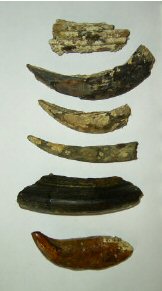Artefacts from the Sea
Wessex Archaeology, 2007. https://doi.org/10.5284/1000260. How to cite using this DOI
Data copyright © Wessex Archaeology unless otherwise stated
This work is licensed under the ADS Terms of Use and Access.
Primary contact
Wessex Archaeology
Portway House
Old Sarum Park
Salisbury
SP4 6EB
UK
Tel: 01722 326867
Fax: 01722 337562
Resource identifiers
- ADS Collection: 708
- ALSF Project Number: 3322
- DOI:https://doi.org/10.5284/1000260
- How to cite using this DOI
Introduction
The Artefacts from the Sea project was funded by the Aggregates Levy Sustainability Fund, as distributed through English Heritage, and operated by Wessex Archaeology. The purpose of the project was to enhance records of artefacts from the sea and inter-tidal areas, held by the National Monuments Record (NMR) and selected coastal Sites and Monuments records (SMR) in England and to record artefacts held in museums or private collections for inclusion into these records.

The project arose fom Wessex Archaeology's experience of preparing Environmental Assessments to accompany marine aggregate licence applications. This experience clearly indicates the value of considering records of artefact findspots from adjacent coastal and marine areas in assessing potential.
The initial region identified for study covered the coastline between the western Solent and the River Tees. Two smaller areas within this general region were agreed for more detailed study, covering the Solent area in the south and the coastline between the River Humber and River Tees in the north.
In Year 1 of the project, attention was directed to accessing documentary sources (primarily antiquarian journals), extracting and collating data from the National Monuments Record (NMR) and from 10 local authority Sites and Monuments Records (SMRs). A MS Access databse mirroring the MIDAS data structure was also developed to contain and facilitate ease of transfer of the enhanced data back to the NMR and SMRs. In Year 2, further enhancenment of findspot records was undertaken accesing the records for artefacts held in 5 museums and 2 private collections.
The final database contained some 2300 individual finds records and demonstrates the important role that the general public has played in bringing artefacts from the sea to the attention of archaeologists.







